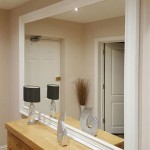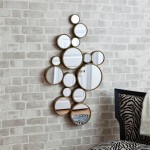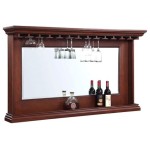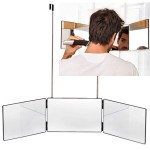How to Mirror iPad Desktop
Mirroring an iPad's display to a larger screen enhances presentations, facilitates collaboration, and provides a more immersive entertainment experience. Several methods exist for achieving this, each with its own advantages and limitations depending on the target device and available technology.
Using AirPlay to Mirror to Apple TV or AirPlay 2-Compatible Smart TVs
AirPlay is Apple's proprietary wireless streaming technology, offering a seamless mirroring experience within the Apple ecosystem. To mirror an iPad to an Apple TV or an AirPlay 2-compatible smart TV, ensure both devices are connected to the same Wi-Fi network. Swipe down from the top-right corner of the iPad screen to access Control Center. Tap the "Screen Mirroring" icon, then select the desired Apple TV or smart TV from the list of available devices. The iPad's display will then be mirrored on the selected device. To stop mirroring, open Control Center again, tap "Screen Mirroring," and select "Stop Mirroring."
Mirroring to a Mac using QuickTime Player
For mirroring to a Mac, QuickTime Player provides a wired solution. Connect the iPad to the Mac using a USB cable. Open QuickTime Player on the Mac. From the menu bar, select "File," then "New Movie Recording." A recording window will appear. Click the down arrow next to the record button. Under "Camera" and "Microphone," select the connected iPad. The iPad's screen will then be displayed within QuickTime Player. This method allows for recording the iPad's screen activity as well.
Utilizing Third-Party Apps for Mirroring to Windows PCs
Mirroring to a Windows PC typically requires third-party applications. Several software options offer this functionality, often leveraging similar technologies to AirPlay. Researching and selecting a reputable app is crucial. These apps generally require installation on both the iPad and the Windows PC. Once installed, follow the specific instructions provided by the application to establish a connection and initiate mirroring. Ensure both the iPad and the PC are connected to the same network for optimal performance.
Leveraging Projectors with Wireless Capabilities or Adapters
Many modern projectors support wireless connections, including AirPlay. If the projector is AirPlay-compatible, the mirroring process is the same as mirroring to an Apple TV. For projectors without built-in wireless capabilities, adapters can bridge the gap. Lightning Digital AV Adapters connect to the iPad's charging port and provide an HDMI output, allowing connection to a projector via an HDMI cable. Alternatively, wireless HDMI adapters offer a cable-free solution, transmitting the iPad's display wirelessly to the projector's HDMI input.
Troubleshooting Common Mirroring Issues
Several factors can occasionally disrupt mirroring functionality. If encountering problems, ensure both devices are connected to the same Wi-Fi network and that the network is functioning correctly. Restarting both devices can often resolve temporary glitches. Verify that the software on both devices is up to date, as outdated software can sometimes cause compatibility issues. If using third-party apps, consult the app's documentation for specific troubleshooting steps. For wired connections, ensure the cable is securely connected and undamaged.
Optimizing Mirroring Performance
For optimal mirroring performance, minimizing network congestion is essential. Close unnecessary applications on both the iPad and the receiving device. Reduce the number of devices connected to the Wi-Fi network, if possible. For wired connections, use high-quality cables to ensure a stable connection. Adjusting the iPad's display brightness can also impact performance, particularly with wireless mirroring. Lowering the brightness can reduce the amount of data transmitted and improve responsiveness.
Choosing the Right Mirroring Method
Selecting the most appropriate mirroring method depends on the specific needs of the user. AirPlay offers a seamless wireless solution within the Apple ecosystem. QuickTime Player provides a reliable wired connection for mirroring to Macs. Third-party apps cater to mirroring to Windows PCs. Projectors offer a large-screen experience, utilizing either wireless capabilities or adapters. Considering factors such as target device compatibility, network availability, and desired functionality will guide the selection process.
Understanding the Limitations of Mirroring
While mirroring is a versatile tool, understanding its limitations is important. Mirroring duplicates the iPad's display, meaning any actions performed on the iPad will be reflected on the mirrored screen. This might not be ideal for scenarios requiring privacy or displaying different content on the iPad and the external display. Additionally, the quality of the mirrored display can be affected by network conditions and the capabilities of the receiving device.

Best Ways To Mirror Pc Ipad

How To Mirror Ipad Pc Via Usb New Guide

5 Ways To Mirror Ipad Pc With Ease Full Guide

5 Ways To Mirror Ipad Pc With Ease Full Guide

5 Feasible Ways To Mirror Pc Iphone Ipad Easily

How To Share Ipad Screen On Pc 5 Ways

Guide How To Mirror Ipad Pc With Without Usb Cable

How To Screen Mirror Ipad Windows Computer With Ipados 15

How To Mirror Iphone Ipad

5 Ways To Mirror Ipad Pc With Ease Full Guide








